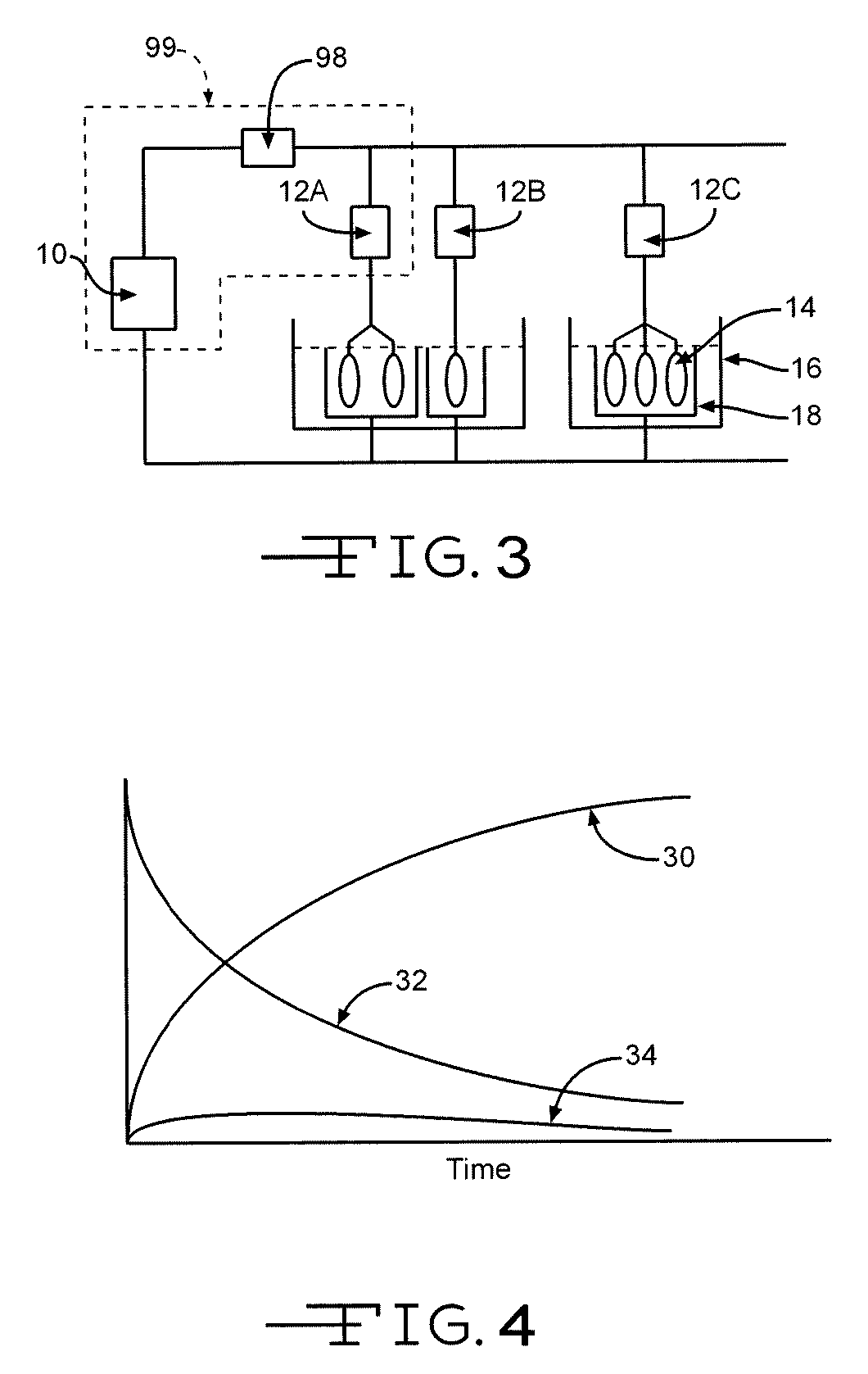Anodizing valve metals by self-adjusted current and power
a technology of anodizing valve and metal, applied in the field of electrolytic capacitors, can solve the problems of increasing the anodizing time, poor anodizing electrical properties, and reducing the heating efficiency of the structure, so as to reduce the excessive heating effect of the structur
- Summary
- Abstract
- Description
- Claims
- Application Information
AI Technical Summary
Benefits of technology
Problems solved by technology
Method used
Image
Examples
examples
[0051]Seven tantalum bodies or structures, each about 7 grams (QR3 powder manufactured by HC Starck), measured about 1.056 inches in diameter, had a 7.0 g / cc pressed density, and were exposed to a 1600° C. / 15 minutes sintering process. For a more detailed disclosure of the sintering process, reference is made to U.S. Pat. No. 6,965,510 to Liu et al., which is assigned to the assignee of the present invention and incorporated herein by reference. The anodizing electrolyte comprised about 80 volume percent PEG400 along with a few volume percent H3PO4 and remainder de-ionized water, and had a conductivity of about 100 μS / cm at 40° C. The initial power supply voltage was set at 415 volts.
[0052]After anodizing, each anode was heat-treated at about 440° C. for 90 minutes and reformed at about 390 volts for about one hour. The DC leakage was measured at about 360 volts at room temperature. All the anodes were formed to about 390 volts without any breakdown and gray-out.
[0053]Comparative Da...
PUM
| Property | Measurement | Unit |
|---|---|---|
| conductivity | aaaaa | aaaaa |
| breakdown voltage | aaaaa | aaaaa |
| weight | aaaaa | aaaaa |
Abstract
Description
Claims
Application Information
 Login to View More
Login to View More - R&D
- Intellectual Property
- Life Sciences
- Materials
- Tech Scout
- Unparalleled Data Quality
- Higher Quality Content
- 60% Fewer Hallucinations
Browse by: Latest US Patents, China's latest patents, Technical Efficacy Thesaurus, Application Domain, Technology Topic, Popular Technical Reports.
© 2025 PatSnap. All rights reserved.Legal|Privacy policy|Modern Slavery Act Transparency Statement|Sitemap|About US| Contact US: help@patsnap.com



